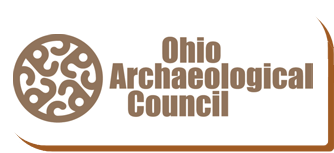Preface to the Special Issue on New Research at Serpent Mound
Jarrod Burks,
Editor
Like many who go in search of or stumble upon Ohio’s most notable earthen effigy, my first Serpent Mound encounter was with a paper version of the Serpent—in Squier and Davis’s 1848 compendium “Ancient Monuments of the Mississippi Valley.” I was an undergraduate student in Anthropology at University of Illinois and I was doing research in the university library for my first term paper on archaeology—a comparison of Hopewell settlements from Illinois and Ohio. That was the first time I had ever seen the wondrous maps in Squier and Davis’s book. As a kid who recently left home (northeastern Illinois), the amazing number and variety of earthworks from Ohio depicted in this old book were almost beyond belief, especially the site from southern Ohio with a snake-shaped mound. Sure, I had seen the effigy mounds in southern Wisconsin, but nothing quite like Serpent Mound.
New Deal, New Serpent: Public Works Projects at Serpent Mound State Memorial
Rory Krupp
Abstract
Archival research has identified documents at the Ohio History Connection related to Serpent Mound archaeology. The current understanding of the site is that Frederic W. Putnam restored Serpent Mound in the 1880s and converted the surrounding property into a public park. The Ohio History Connection’s State Archives series and New Deal agency records indicate that the Serpent Mound was again restored in 1934–1935. Consequently, today’s Serpent Mound and its surrounding landscape are in reality a New Deal construct based largely on landscaping principles developed by the National Park Service in the 1920s and 1930s. Depression-era agencies’ financial prioritization on wages and not materials seems to indicate that fill used in the restoration originated in the park to save money and may have been associated with restroom construction in 1934–1935. Consequently, the Fort Ancient Baum Focus material located in the Serpent Mound appears to originate from elsewhere within the park and is in the mound as a result of the New Deal restoration.
The Mississippian Iconography of Serpent Mound
Bradley T. Lepper
Abstract
Serpent Mound (33AD1) is one of the most recognizable icons of American archaeology, yet there is ongoing debate over its age. Without an understanding of its antiquity, and thus its cultural context, it is difficult to address the broader question of what it might have meant to its builders. Various attempts to obtain radiocarbon dates for Serpent Mound have yielded more or less inconclusive results. A panel of Mississippian pictographs in Picture Cave in Missouri includes three motifs that are strikingly similar to the three principal components of Serpent Mound. Radiocarbon dates for the Picture Cave pictographs are contemporaneous with dates from Serpent Mound. When considered in the light of Dhegiha Siouan traditions, these pictographs offer insights into the original purpose and meaning of Serpent Mound. The general relevance of this iconography for the Late Prehistoric Ohio valley is affirmed by a fragment of an effigy pipe depicting a humanoid in association with a snake, which was found in Morgan County, Ohio. Serpent Mound was built during a period of severe droughts in the Mississippi valley, which resulted in Mississippian refugees migrating to the Ohio valley. I suggest that these refugees, or a local Fort Ancient community they influenced, created Serpent Mound as a means of calling upon the Great Serpent, Lord of the Beneath World, to maintain favorable environmental conditions in the Ohio valley.
Use and Continuity on the Plateau: Recent Archaeological Investigations at Serpent Mound State Memorial, Ohio
Kevin R. Schwarz
Abstract
Recent archaeological investigations, building on previous work, establish more clearly that the Serpent Mound plateau has been a focus of intensive, repeated activity both in prehistory and more recently. In the 1880s, Frederic Ward Putnam conducted the first archaeological investigation of the Great Serpent Mound and the surrounding plateau. Subsequent analyses established that the Adena constructed a conical mound on the plateau to the south of the Serpent effigy. An Adena, and later, a Fort Ancient settlement were established nearby. In 2011, ASC Group, Inc. (ASC) conducted archaeological investigations in the areas around the conical mound prior to the installation of utilities at the Serpent Mound State Memorial. The utility work was planned to support the increased tourism expected due to the pending World Heritage nomination of the site. The excavations shed light on activities in the conical mound area by both the Early Woodland Adena and Late Prehistoric Fort Ancient peoples. Adena activities involved lithic reduction and tool use, while a buried A horizon appears to relate to a burned area Putnam investigated north of the Adena mound. However, a radiocarbon analysis returned a Fort Ancient period date, suggesting the re-use of the area around the conical mound.
